World War II, the most massive and appalling military conflagration in history began on September 1, 1939 when Hitler's troops invaded Poland and from there, it spread inexorably in all directions. On December 7 1941, the Japanese bombed Pearl Harbour, thus bringing the huge American armies into the picture and the Pacific was ablaze as Japan and America fought a devastating island-hopping war across the ocean. As well as swallowing millions of lives, the demands of the military machine gave rise to the atom bomb and the computer; the British Empire was dying but the Commonwealth was heralded; the war made Churchill and the 'spiv'; it created rationing and the Welfare State; it slaughtered 6,000,000 Jews, broke marriages and laid waste to the European economy. This is a graphic account of the fateful years that changed the world forever. Illustrated with black and white photos.
-
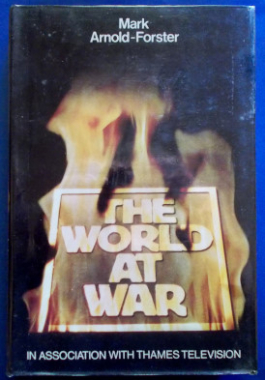
-

 Australian Richard Hillary joined RAF Fighter Command’s 603 Squadron in July 1940, then based in Scotland and flying the new Supermarine Spitfire. On 27 August 1940 the squadron moved south to London, the epicentre of the Battle of Britain, and within a week Hillary had shot down five Messerschmitt 109s, becoming an ‘ace’. But on his last sortie he was shot out of the sky over Dungeness, the cockpit of his Spitfire became engulfed in flames and Hillary was grievously burned as he desperately tried to bale out. Hillary was soon to become the most famous patient of the RAF’s pioneering plastic surgeon, Archibald McIndoe, and member of his ‘Guinea Pig Club’. He would endure months of painful surgery in an attempt to repair the damage to his hands and face, and allow him to return to active duty. Originally published in 1942, just months before he died in a second crash, The Last Enemy recounts the struggles and successes of a young man in the Royal Air Force.
Australian Richard Hillary joined RAF Fighter Command’s 603 Squadron in July 1940, then based in Scotland and flying the new Supermarine Spitfire. On 27 August 1940 the squadron moved south to London, the epicentre of the Battle of Britain, and within a week Hillary had shot down five Messerschmitt 109s, becoming an ‘ace’. But on his last sortie he was shot out of the sky over Dungeness, the cockpit of his Spitfire became engulfed in flames and Hillary was grievously burned as he desperately tried to bale out. Hillary was soon to become the most famous patient of the RAF’s pioneering plastic surgeon, Archibald McIndoe, and member of his ‘Guinea Pig Club’. He would endure months of painful surgery in an attempt to repair the damage to his hands and face, and allow him to return to active duty. Originally published in 1942, just months before he died in a second crash, The Last Enemy recounts the struggles and successes of a young man in the Royal Air Force. -

Being Reports on Various New Zealand Towns and Country Places and On Some of the Doings of Their People as Described in Korero, Magazine of the Army Education Welfare Service. Korero was an illustrated troop magazine, a fortnightly bulletin that contained articles, sketches and verse of interest to members of the Armed Forces. Contributions were sought from individuals within the New Zealand Armed Forces and were intended to give New Zealanders serving overseas a brief survey of the towns and districts they had left. A maximum of £3 in canteen orders was made as payment. The surveys are not profound social studies nor are they superficial - but they are observant and sympathetic. Drawings were used rather than photographs as photographs did not reproduce well on newsprint. Illustrated with excellent black and white sketches. Korero is Maori for talk, discussion or meeting.
-
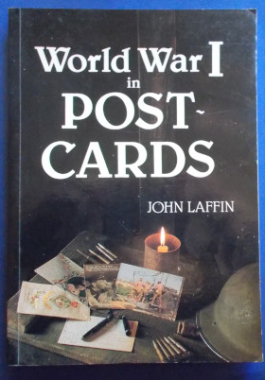 The extraordinary phenomenon of the war postcard - reflections of the full range of responses to the most murderous and ghastly of all wars. The chapters herein include: story postcards, military subjects, heroism and agony, religious themes, humour, animal and field postcards - even those embroidered with silk and very beautiful still today. Even propaganda is represented. Almost three hundred post cards are reproduced - individual historic documents of a bygone age. Photos in colour and black and white.
The extraordinary phenomenon of the war postcard - reflections of the full range of responses to the most murderous and ghastly of all wars. The chapters herein include: story postcards, military subjects, heroism and agony, religious themes, humour, animal and field postcards - even those embroidered with silk and very beautiful still today. Even propaganda is represented. Almost three hundred post cards are reproduced - individual historic documents of a bygone age. Photos in colour and black and white. -
 A detailed history of the World War II American B-29 Enola Gay, its crew, and the controversial mission to drop the atomic bomb on Hiroshima, Japan. Painstakingly researched, the story behind the decision to send the Enola Gay to bomb Hiroshima is told through firsthand sources. From diplomatic moves behind the scenes to Japanese actions and the US Army Air Force’s call to action, no detail is left untold. Touching on the early days of the Manhattan Project and the first inkling of an atomic bomb, investigative journalist Gordon Thomas and his writing partner Max Morgan-Witts, take WWII enthusiasts through the training of the crew of the Enola Gay and the challenges faced by pilot Paul Tibbets. Illustrated with black and photographs.
A detailed history of the World War II American B-29 Enola Gay, its crew, and the controversial mission to drop the atomic bomb on Hiroshima, Japan. Painstakingly researched, the story behind the decision to send the Enola Gay to bomb Hiroshima is told through firsthand sources. From diplomatic moves behind the scenes to Japanese actions and the US Army Air Force’s call to action, no detail is left untold. Touching on the early days of the Manhattan Project and the first inkling of an atomic bomb, investigative journalist Gordon Thomas and his writing partner Max Morgan-Witts, take WWII enthusiasts through the training of the crew of the Enola Gay and the challenges faced by pilot Paul Tibbets. Illustrated with black and photographs. -
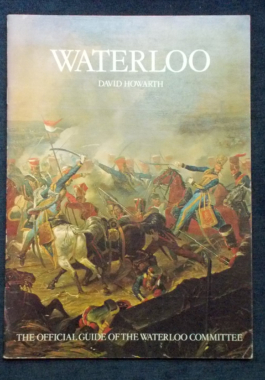 Believed to be the first guide to the battlefield written in English by an English writer, who is probably also the greatest living expert on Waterloo. There's descriptions of the battle location, weaponry and tactics that were all implement in a few hours on June 187, 1815. Illustrated.
Believed to be the first guide to the battlefield written in English by an English writer, who is probably also the greatest living expert on Waterloo. There's descriptions of the battle location, weaponry and tactics that were all implement in a few hours on June 187, 1815. Illustrated. -

Australia was almost defenceless against Japanese attack in 1942. Here it is suggested that vital lessons for today can be learnt from that period. Did the Australian leaders rely too heavily on Britain and were they let down? How much can Australia rely on any country for support in wartime? From the days of the First Fleet it was always accepted that the United Kingdom would send its fleet to defend Australia. For this reason Australia sent troops overseas as early as 1885 to help fight Imperial wars. The situation changed after 1918 for then Japan became a likely enemy. Could Britain defend Australia from attack and conduct a war in Europe? Dr. McCarthy examines both sides of the question and concludes that it was never possible.
-

The author, a TV reporter and journalist, has condensed his experiences and observations of the Indo-China battlefields over a thirty-five year period. Sights, sounds and smells come alive in the graphic and vivid recreation by a neutral yet passionately involved eye-witness. Scholl-Latour first traveled to South-East Asia on a troop-ship in 1945 and since then has covered three wars: the war against French colonialism, the American involvement in Vietnam and the final devastation of Kampuchea. He sees those years as a tragedy that has shattered every illusion of freedom as the French, the Americans and the Khmer Rouge each tried to impose their versions of freedom by force.
-

Fire One! Hugh Clarke
$30.00Two true war time stories of Australia: Japanese midget submarines attacked Sydney Harbour in 1942, stunning Australia with their preparations, strategy and the aftermath - an attack that could have paved the way for the first wartime invasion in Australia's history. The greatest mass escape of prisoners-of-war in British milirtary history took place in the small country town of Cowra in 1944. The attempt was hopeless - 231 Japanese and 4 Australians were killed. Illustrated with black and white photographs. -
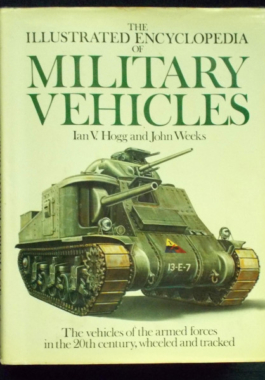 The use and development of motorised vehicles by the armed forces of the twentieth century is a complex and fascinating subject. While many books are devoted specifically to tanks, trucks and so on, this lavishly illustrated and comprehensive encyclopedia sets out to provide a complete and authoritative guide to motorised military vehicles of all categories - from the first quadricycles and armoured cars of the late nineteenth and early twentieth century to the 1980s. https://cosmiccauldronbooks.com.au/p/biography-general-george-s-patton-ian-v-hogg/
The use and development of motorised vehicles by the armed forces of the twentieth century is a complex and fascinating subject. While many books are devoted specifically to tanks, trucks and so on, this lavishly illustrated and comprehensive encyclopedia sets out to provide a complete and authoritative guide to motorised military vehicles of all categories - from the first quadricycles and armoured cars of the late nineteenth and early twentieth century to the 1980s. https://cosmiccauldronbooks.com.au/p/biography-general-george-s-patton-ian-v-hogg/ -
 As we crowded the decks off Gallipoli and watched the first shells crash into Turkish soil... Trooper Ion L. Idriess of the 5th Australian Light Horse began keeping a diary. Over the next three years as the regiment moved onto Palestine, stormed Beersheba and pushed into the Sinai, his diary grew and became one of the most vivid pieces of war narrative ever written. Unconcerned with grand strategy or moralisations, Idriess records the realities of his war - maggot-ridden trenches crowded with the corpses of his mates, the good friendships, the bad tucker, the heat, the dust, the boredom of desert patrols - and always the fighting and his reactions to it, which reveal far better than mere description, since he was there. The rifle fire grew to a roar that drowned the voice of the man next to me. I felt as a stone age man might feel if volcanoes all around him suddenly spat life and roared...Believed to be Idriess' earliest work.
As we crowded the decks off Gallipoli and watched the first shells crash into Turkish soil... Trooper Ion L. Idriess of the 5th Australian Light Horse began keeping a diary. Over the next three years as the regiment moved onto Palestine, stormed Beersheba and pushed into the Sinai, his diary grew and became one of the most vivid pieces of war narrative ever written. Unconcerned with grand strategy or moralisations, Idriess records the realities of his war - maggot-ridden trenches crowded with the corpses of his mates, the good friendships, the bad tucker, the heat, the dust, the boredom of desert patrols - and always the fighting and his reactions to it, which reveal far better than mere description, since he was there. The rifle fire grew to a roar that drowned the voice of the man next to me. I felt as a stone age man might feel if volcanoes all around him suddenly spat life and roared...Believed to be Idriess' earliest work. -
 The Von Bock memoirs allow the reader to see the entire drama of the Second World War through the eyes of one of Germany's most important military commanders. After the attacks on Poland and Western Europe, campaigns that he helped bring to a successful conclusion, Von Bock became Commander-in-Chief of Army Group Center which carried out the main drive on Moscow during Operation Barbarossa and brought the Red Army to the verge of collapse. Hitler relieved Von Bock when the German offensive bogged down during the winter of 1941/1942. After he returned as Commander-in-Chief of Army Group South, Von Bock was eventually placed in temporary 'retirement' when he critised Hitler's division of forces against Stalingrad and the Caucasus - and the road to catastrophe began. Army commanders like Hoth, Guderian, Kluge and Paulus served under Von Bock, while at his side was his nephew Henning von Tresckow, who led the most active resistance movement against Hitler, and Carl-Hans von Hardenberg, a friend and advisor of Von Stauffenberg. Their efforts to win him over to the resistance failed, yet Von Bock the pronounced resistance sentiments among his staff, and even became privy to the attempted assassination of Hitler on July 20, 1944. This book allows us to reassess Fedor Von Bock, whose complex personality is revealed by his diary entries.
The Von Bock memoirs allow the reader to see the entire drama of the Second World War through the eyes of one of Germany's most important military commanders. After the attacks on Poland and Western Europe, campaigns that he helped bring to a successful conclusion, Von Bock became Commander-in-Chief of Army Group Center which carried out the main drive on Moscow during Operation Barbarossa and brought the Red Army to the verge of collapse. Hitler relieved Von Bock when the German offensive bogged down during the winter of 1941/1942. After he returned as Commander-in-Chief of Army Group South, Von Bock was eventually placed in temporary 'retirement' when he critised Hitler's division of forces against Stalingrad and the Caucasus - and the road to catastrophe began. Army commanders like Hoth, Guderian, Kluge and Paulus served under Von Bock, while at his side was his nephew Henning von Tresckow, who led the most active resistance movement against Hitler, and Carl-Hans von Hardenberg, a friend and advisor of Von Stauffenberg. Their efforts to win him over to the resistance failed, yet Von Bock the pronounced resistance sentiments among his staff, and even became privy to the attempted assassination of Hitler on July 20, 1944. This book allows us to reassess Fedor Von Bock, whose complex personality is revealed by his diary entries. -
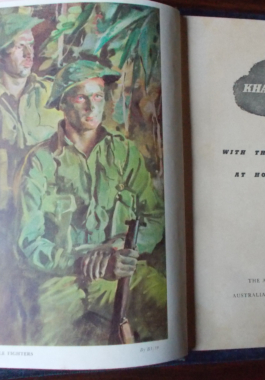
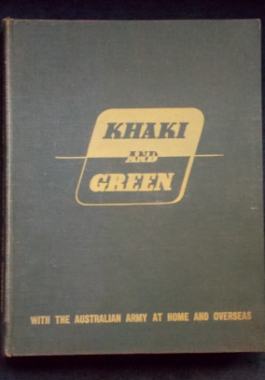
With the Australian Army at Home and Overseas. Published for the Australian Military Forces by the Australian War Memorial, Canberra, 1943. With news and information - literally - as it happened from the Middle East and the South West Pacific. Chapters and writings include: Alamein Christmas Shops; Luck and Gus; I Saw a Panzer Attack; The Log Which Wasn't; Moon Madness; Survival of the Fairest; No Mates in the Army and much more, all written by Australia's Own. With stories, yarns, cartoons, poems, fabulous colour plates, black and white illustrations and photographs. Real war history.
-
 "Learn all you can about the German Army and one day you will be a valuable man to your country." These words were spoken to young Alexander Scotalnd by Major Wade, a British liaison officer in German West Africa in 1904. He never forgot those words. This book covers how much he learnt and how valuable were his services to his country. This young man served in the German Army - at the suggestion of the Germans - for the duration of the Hottentot Rebellion, thereby gaining an intimate knowledge of the organisation and strengths of the German military machine. He grew to know, by close contact, the habits, language and mental outlook of the German soldier. This knowledge was the basis of his achievements in espionage, interrogation and undercover work in two world wars. His reputation led to a strange meeting with Adolf Hitler in 1937, at the home of a mutual friend. His career reached its zenith in 1947 when - as Chief Officer of the War Crimes Investigation Unit, he played a decisive role in bringing Nazi war criminals to justice. Illustrated with black and white photographs.
"Learn all you can about the German Army and one day you will be a valuable man to your country." These words were spoken to young Alexander Scotalnd by Major Wade, a British liaison officer in German West Africa in 1904. He never forgot those words. This book covers how much he learnt and how valuable were his services to his country. This young man served in the German Army - at the suggestion of the Germans - for the duration of the Hottentot Rebellion, thereby gaining an intimate knowledge of the organisation and strengths of the German military machine. He grew to know, by close contact, the habits, language and mental outlook of the German soldier. This knowledge was the basis of his achievements in espionage, interrogation and undercover work in two world wars. His reputation led to a strange meeting with Adolf Hitler in 1937, at the home of a mutual friend. His career reached its zenith in 1947 when - as Chief Officer of the War Crimes Investigation Unit, he played a decisive role in bringing Nazi war criminals to justice. Illustrated with black and white photographs. -
 Illustrated with over 1300 photographs, some never previously published, this military journey begins with the build up to war and the invasion of Poland to ultimate victory over Japan. Immensely readable, it brings the events and the people of those turbulent times into sharp focus for those who lived through the conflict as well as those born during the fifty years that have elapsed since the war's end.
Illustrated with over 1300 photographs, some never previously published, this military journey begins with the build up to war and the invasion of Poland to ultimate victory over Japan. Immensely readable, it brings the events and the people of those turbulent times into sharp focus for those who lived through the conflict as well as those born during the fifty years that have elapsed since the war's end. -
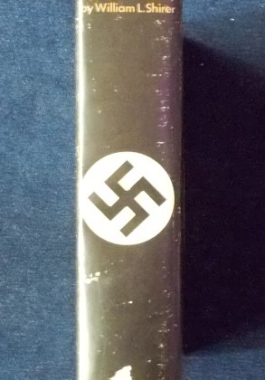
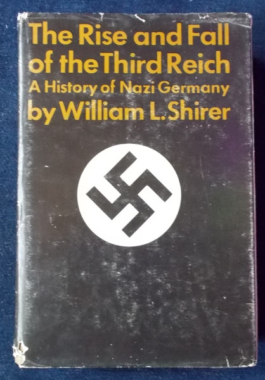
Here for the first time is the complete history of Hitler's empire. No other empire ever bequeathed to historians such mountains of evidence about its rise and fall as the Third Reich. The Allied demand for unconditional surrender produced - before the Nazis could destroy their files - an almost hour-to-hour record of the nightmare realm created by Hitler. This record includes the testimony of Nazi leaders, concentration camp inmates, the diaries of officials, transcripts of secret conferences, army orders, private letters - all the vast paper work behind a conspiracy to conquer the world. This is also the story of Hitler the man - his love affairs, his imprisonment, his suicide. There is also details of the plot to kidnap the Duke and Duchess of Windsor and hundreds of other inside stories. Most of all, it is the story of how Hitler destroyed his beloved Germany. The author, who watched and reported on the Nazis since 1925 had been reporting on-the-spot from Germany and Europe for almost forty years and spent over five years sifting the mountains of paper that eventually became this definitive history.





